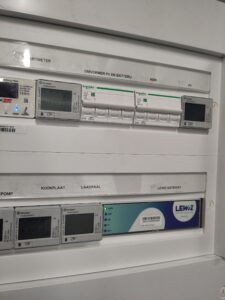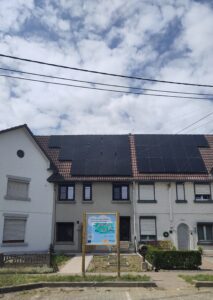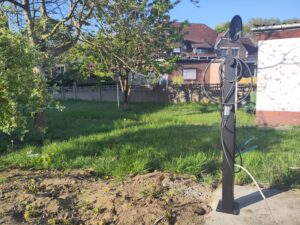In the Garden City district of Waterschei, oPEN Lab is taking another significant step towards a more sustainable future. One of the test homes—already equipped with a heat pump, solar panels, ventilation system, and home battery—has recently been fitted with an electric vehicle (EV) charging station. This addition marks a double milestone: one for the project itself, and another for the residents who can now conveniently charge their EVs at home using self-generated solar power. The first charging station has already been successfully installed, marking the start of this next phase in the project, 4 others are planned to be installed soon.


Smart charging with solar energy
The charging stations, installed by Futech, are being rolled out to oPEN Lab test homes where residents own electric vehicles. Thanks to the integrated solar panels and battery storage, the EVs can be charged using clean, locally generated energy.
What’s more, the charging process is fully adaptable. Through a user-friendly smartphone app, residents can manage their charging settings to ensure their car is charged using the maximum available solar and battery power, while minimising the impact on their capacity-based grid tariff.


Valuable energy insights
VITO will monitor the energy usage of the installed charging stations. This data provides detailed insights into the overall energy performance of the test homes, helping researchers and partners better understand household energy use and the impact of integrated smart technologies.
Strong community interest
The response from participating households has been overwhelmingly positive. Nearly all eligible residents have opted to install a charger, highlighting not only the growing interest in electric mobility but also the trust residents place in solutions that support smarter, more sustainable energy use.

A practical addition and a symbolic milestone
The installation of EV chargers is more than just a practical upgrade. It represents a concrete step towards an energy-efficient future—one where residents are actively involved in the energy transition. In that sense, the charging station becomes more than a device: it’s a true milestone in both the project and the neighborhood’s journey toward sustainability.
